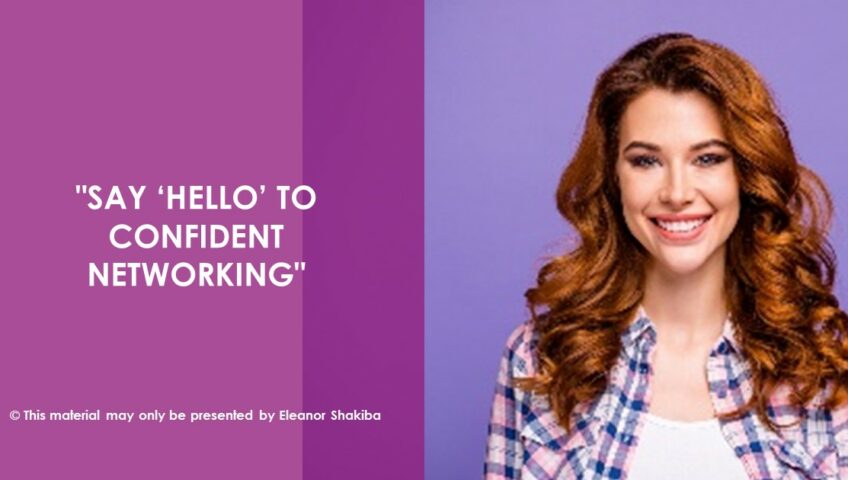Does the thought of attending a networking event fill you with dread? If so, you’re not alone. Many people find it daunting to connect with total strangers. Even highly confident professionals can find networking a challenge. Key questions participants in my communication skills courses ask about networking include these.
- How should I introduce myself?
- What should I talk about?
- What if others aren’t interested in what I have to say?
In fact, about half the people in my classes report thinking things like this. So do the maths. That means there is a 50% chance that stranger you’re introducing yourself to is experiencing the same trepidation as you. Fortunately, there are some simple tactics you can use to make both yourself and others more comfortable at professional events. Here are three tips to get you started.
Use your happy voice
Your tone and pace of voice send an immediate message to your counterpart. Using a happy tone of voice is more effective than trying to sound confident when building rapport. That’s probably good news if you’ve ever been given the advice ‘just relax and be confident’. Psychologists have done some interesting research in this area. One experiment involved asking volunteers to record themselves, saying “hello” five different times. First, they recorded their greeting using their normal tone of voice. Next, they took on a happy tone. In the third recording, they shifted into a sad mode. Recording number four was an angry tone. And the final recording was made while the volunteer was in Amy Cuddy’s ‘power pose’. If you’re familiar with Cuddy’s research, you’re probably now predicting that the power pose recording would have been preferred by people listening to the greeting. In fact, this was not the case.
The research participants who listened to the recordings were asked to rate how likeable the speaker was in each version of their recording. Across a range of voices, with differing accents and energy levels, the results were conclusive. Listeners responded most positively to the happy voices. So keep this in mind the next time you’re introducing yourself to someone new.
Use information hooks to start the conversation
You can easily avoid awkward silences by thinking of two or three intriguing questions to use as conversation openers. Examples include:
- What’s the most interesting meal you’ve ever had?
- What’s been your most positive learning experience in life?
- What are your thoughts on the topic we’re covering here today?
- How did you get into your line of work?
You’ll notice that all these questions are open questions. This means they encourage the conversation partner to open up. Hopefully, as they speak, you’ll hear something you can tie into. In no time at all, you’ll find the conversation flowing smoothly.
Find ways to help
Networking is about making lasting connections. Being helpful will guarantee this happens. Focus on others’ interests and ambitions. If you feel there are opportunities to help out, make an offer. That’s a great way to create a positive impression, as well as build a bridge to staying in touch.
Remember that positive psychology is a great tool for building constructive relationships. Focus on helping others feel comfortable. You’ll soon discover that this distracts you from your worries about networking. You will become more confident and that will make you appear relaxed and interesting.
About the author: Eleanor Shakiba
Eleanor is a specialist in positive psychology. Her passion is teaching talented people to use social and emotional intelligence to excel in business. These skills centre around building positive mindsets, proactive communication habits and purposeful leadership behaviours. Eleanor’s qualifications include degrees and diplomas in Social Anthropology, Positive Psychology, Counselling, Coaching, Adult Education and Neuro Linguistic Programming. She is also the author of the Positive Psychology Toolkit for HR and L&D Practitioners. This is a free resource for trainers and facilitators.
